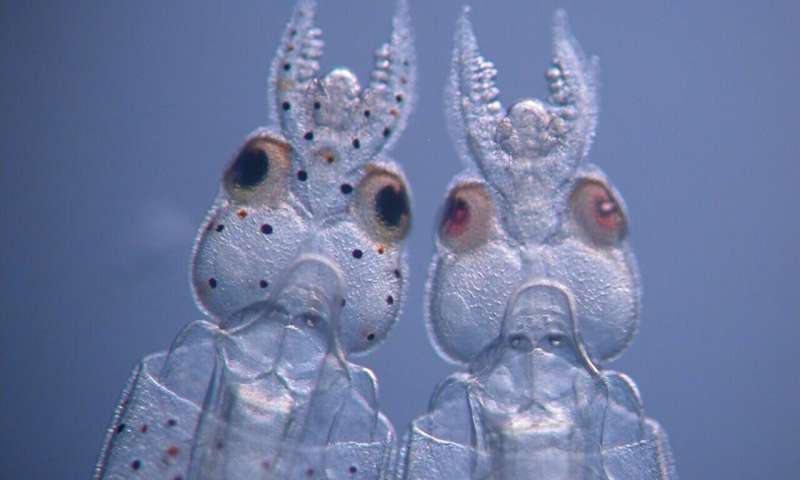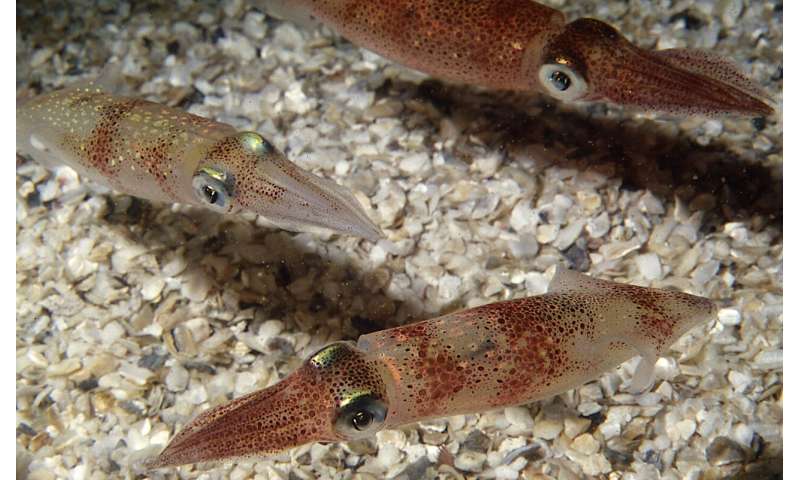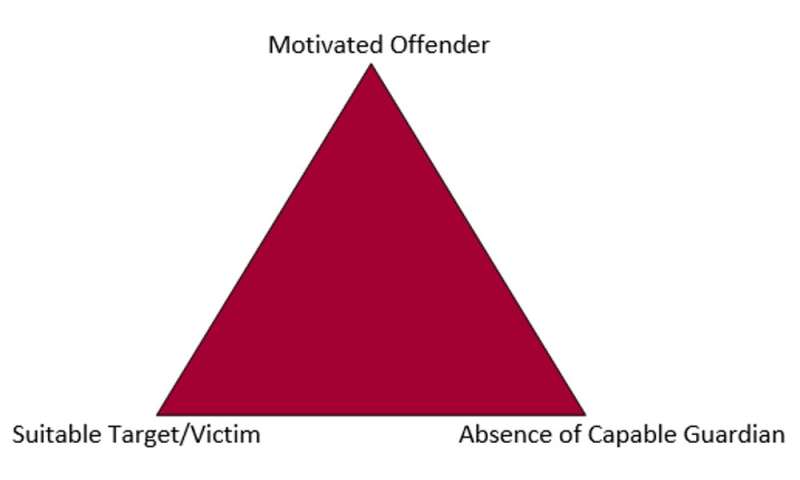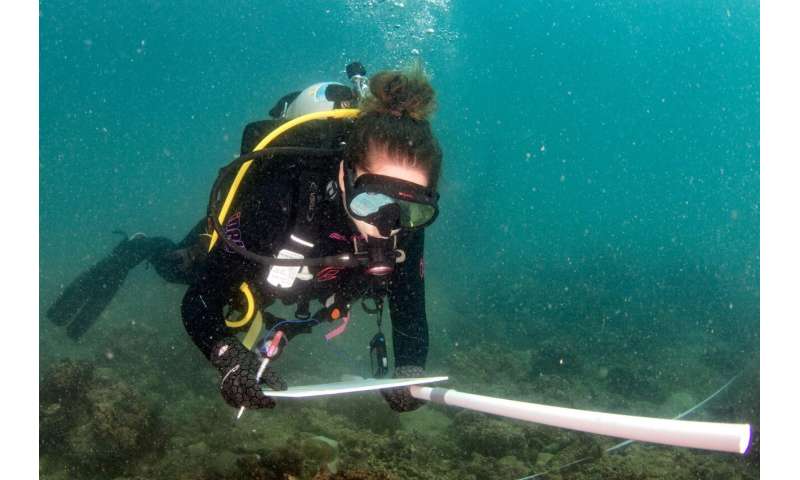by Amy McCaig, Rice University
College graduates make more money if they major in fields with close ties to jobs, according to a new study from the Houston Education Research Consortium (HERC), part of Rice University's Kinder Institute for Urban Research and School of Social Sciences.
"School-to-Work Linkages in Texas," authored by HERC researchers Brian Holzman and Bethany Lewis and graduate student Irina Chukhray of the University of California, Davis, examines Texas residents with bachelor's degrees who are 25-64 years old using microdata from the American Community Survey 5-Year Sample for 2013-2017.
The researchers studied what they refer to as "linkage," the connection between college majors and specific occupations. Some college majors like architecture and engineering have clear paths to jobs, while other majors like history and social science do not and end up working in a variety of professions ranging from teaching to business. Holzman, Lewis and Chukhray found that graduates who completed college majors with clearer paths to jobs not only tended to make more money, but also were less likely to find themselves unemployed.
"Aside from the positive relationship between linkage and earnings, we also found linkage mattered more for women, Black, Hispanic, foreign-born and non-native-English-speaking workers," Holzman said. "Linkage appeared to close wage gaps between marginalized and privileged populations."
The report also found:
People who completed college majors with weak ties to jobs (such as graduates with degrees in history and social sciences) had a 3.2% likelihood of being unemployed, compared with 2.4% for those who completed majors with strong ties to jobs (such as graduates working in professions like architecture and engineering).
Older, female, Asian, foreign-born and non-native-English-speaking workers were more likely to choose college majors with closer ties to jobs than those who were younger, male, white, Black, Hispanic, native-born or native English speakers.
Holzman and his co-authors recommend education policymakers and researchers explore why students choose college majors strongly or loosely connected to the job market. The researchers also suggest higher-education practitioners develop new strategies to help students understand the career pathways open to them when choosing a given major. Finally, they recommend college career placement and academic staff collaborate with employers to help students, particularly those from underserved backgrounds, find jobs in occupations related to their majors.
Explore furtherAttendance, grades, advanced courses best predict if HISD students will go to college
More information: The paper is available online at kinder.rice.edu/
Provided by Rice University
1 shares
Facebook
Twitter
Email
Feedback to editors
Featured
Last Comments
Popular
Nanoparticle meta-grid for enhanced light extraction from light-emitting devices
JUL 31, 2020
0
Researchers find crystals of indium selenide have exceptional flexibility
JUL 31, 2020
0
Study of air quality in the U.S. shows income disparities still exist
JUL 31, 2020
0
Epitaxial antiperovskite/perovskite heterostructures for materials design
JUL 30, 2020
0
Two more polymorphs found for red-orange-yellow
JUL 30, 2020
0

New printing process advances 3-D capabilities
12 HOURS AGO
Scientists discover new class of semiconducting entropy-stabilized materials
12 HOURS AGO
US astronauts pack up for rare splashdown in SpaceX capsule
23 HOURS AGO
Satellite survey shows California's sinking coastal hotspots
JUL 31, 2020
Texas cave sediment upends meteorite explanation for global cooling
JUL 31, 2020
How human sperm really swim: New research challenges centuries-old assumption
JUL 31, 2020
When Dirac meets frustrated magnetism
JUL 31, 2020
Spain sets temperature records, UK sees hottest day of 2020
JUL 31, 2020
NASA's Webb Telescope will study Jupiter, its rings, and two intriguing moons
JUL 31, 2020
Way, shape and form: Synthesis conditions define the nanostructure of manganese dioxide
JUL 31, 2020
Relevant PhysicsForums posts
EMF induced in a straight current-carrying conductor
1 HOUR AGO
Edit: Why is the work lower when a reaction becomes irreversible?
5 HOURS AGO
Continuity equation of the electric field
JUL 29, 2020
Units of amu
JUL 28, 2020
How do nonlocality theorems influence relativity principles?
JUL 28, 2020
Mars: estimations about its colonization - liquid water issue
JUL 26, 2020
More from Other Physics Topics
1
2
Related Stories

Attendance, grades, advanced courses best predict if HISD students will go to college
JUL 09, 2020
Why women select college majors with lower earnings potential
NOV 25, 2019
Gender gaps in STEM college majors emerge in high school
JUL 02, 2020

Achievement isn't why more men are majoring in physics, engineering and computer science
JUN 18, 2020
College major choices can predict gender wage gaps
MAR 03, 2020
Why double majors might beat you out of a job
APR 09, 2018
Recommended for you

Exercise in a first-year writing course increases retention at broad-access universities
JUL 15, 2020
Albert Einstein the mediocre: Why the h-index is a bogus measure of academic impact
JUL 09, 2020
School absenteeism has surprising consequences for adults
JUL 01, 2020

Showing pro-diversity feelings are the norm makes individuals more tolerant
JUN 30, 2020
Achievement isn't why more men are majoring in physics, engineering and computer science
JUN 18, 2020
Using Jenga to explain lithium-ion batteries
JUN 15, 2020
The researchers studied what they refer to as "linkage," the connection between college majors and specific occupations. Some college majors like architecture and engineering have clear paths to jobs, while other majors like history and social science do not and end up working in a variety of professions ranging from teaching to business. Holzman, Lewis and Chukhray found that graduates who completed college majors with clearer paths to jobs not only tended to make more money, but also were less likely to find themselves unemployed.
"Aside from the positive relationship between linkage and earnings, we also found linkage mattered more for women, Black, Hispanic, foreign-born and non-native-English-speaking workers," Holzman said. "Linkage appeared to close wage gaps between marginalized and privileged populations."
The report also found:
People who completed college majors with weak ties to jobs (such as graduates with degrees in history and social sciences) had a 3.2% likelihood of being unemployed, compared with 2.4% for those who completed majors with strong ties to jobs (such as graduates working in professions like architecture and engineering).
Older, female, Asian, foreign-born and non-native-English-speaking workers were more likely to choose college majors with closer ties to jobs than those who were younger, male, white, Black, Hispanic, native-born or native English speakers.
Holzman and his co-authors recommend education policymakers and researchers explore why students choose college majors strongly or loosely connected to the job market. The researchers also suggest higher-education practitioners develop new strategies to help students understand the career pathways open to them when choosing a given major. Finally, they recommend college career placement and academic staff collaborate with employers to help students, particularly those from underserved backgrounds, find jobs in occupations related to their majors.
Explore furtherAttendance, grades, advanced courses best predict if HISD students will go to college
More information: The paper is available online at kinder.rice.edu/
Provided by Rice University
1 shares
Feedback to editors
Featured
Last Comments
Popular
Nanoparticle meta-grid for enhanced light extraction from light-emitting devices
JUL 31, 2020
0
Researchers find crystals of indium selenide have exceptional flexibility
JUL 31, 2020
0
Study of air quality in the U.S. shows income disparities still exist
JUL 31, 2020
0
Epitaxial antiperovskite/perovskite heterostructures for materials design
JUL 30, 2020
0
Two more polymorphs found for red-orange-yellow
JUL 30, 2020
0

New printing process advances 3-D capabilities
12 HOURS AGO

Scientists discover new class of semiconducting entropy-stabilized materials
12 HOURS AGO

US astronauts pack up for rare splashdown in SpaceX capsule
23 HOURS AGO

Satellite survey shows California's sinking coastal hotspots
JUL 31, 2020

Texas cave sediment upends meteorite explanation for global cooling
JUL 31, 2020

How human sperm really swim: New research challenges centuries-old assumption
JUL 31, 2020

When Dirac meets frustrated magnetism
JUL 31, 2020

Spain sets temperature records, UK sees hottest day of 2020
JUL 31, 2020

NASA's Webb Telescope will study Jupiter, its rings, and two intriguing moons
JUL 31, 2020

Way, shape and form: Synthesis conditions define the nanostructure of manganese dioxide
JUL 31, 2020
Relevant PhysicsForums posts
EMF induced in a straight current-carrying conductor
1 HOUR AGO
Edit: Why is the work lower when a reaction becomes irreversible?
5 HOURS AGO
Continuity equation of the electric field
JUL 29, 2020
Units of amu
JUL 28, 2020
How do nonlocality theorems influence relativity principles?
JUL 28, 2020
Mars: estimations about its colonization - liquid water issue
JUL 26, 2020
More from Other Physics Topics
1
2
Related Stories

Attendance, grades, advanced courses best predict if HISD students will go to college
JUL 09, 2020

Why women select college majors with lower earnings potential
NOV 25, 2019

Gender gaps in STEM college majors emerge in high school
JUL 02, 2020

Achievement isn't why more men are majoring in physics, engineering and computer science
JUN 18, 2020

College major choices can predict gender wage gaps
MAR 03, 2020

Why double majors might beat you out of a job
APR 09, 2018
Recommended for you

Exercise in a first-year writing course increases retention at broad-access universities
JUL 15, 2020

Albert Einstein the mediocre: Why the h-index is a bogus measure of academic impact
JUL 09, 2020

School absenteeism has surprising consequences for adults
JUL 01, 2020

Showing pro-diversity feelings are the norm makes individuals more tolerant
JUN 30, 2020

Achievement isn't why more men are majoring in physics, engineering and computer science
JUN 18, 2020

Using Jenga to explain lithium-ion batteries
JUN 15, 2020




 Doryteuthis pealeii, often called the Woods Hole squid. Studies with D. pealeii have led to major advances in neurobiology, including description of the fundamental mechanisms of neurotransmission. The Marine Biological Laboratory collects D. pealeii from local waters for an international community of researchers. Credit: Roger Hanlon
Doryteuthis pealeii, often called the Woods Hole squid. Studies with D. pealeii have led to major advances in neurobiology, including description of the fundamental mechanisms of neurotransmission. The Marine Biological Laboratory collects D. pealeii from local waters for an international community of researchers. Credit: Roger Hanlon







 Routine activity theory (or the crime triangle). Credit: UN Office on Drugs and Crime
Routine activity theory (or the crime triangle). Credit: UN Office on Drugs and Crime


